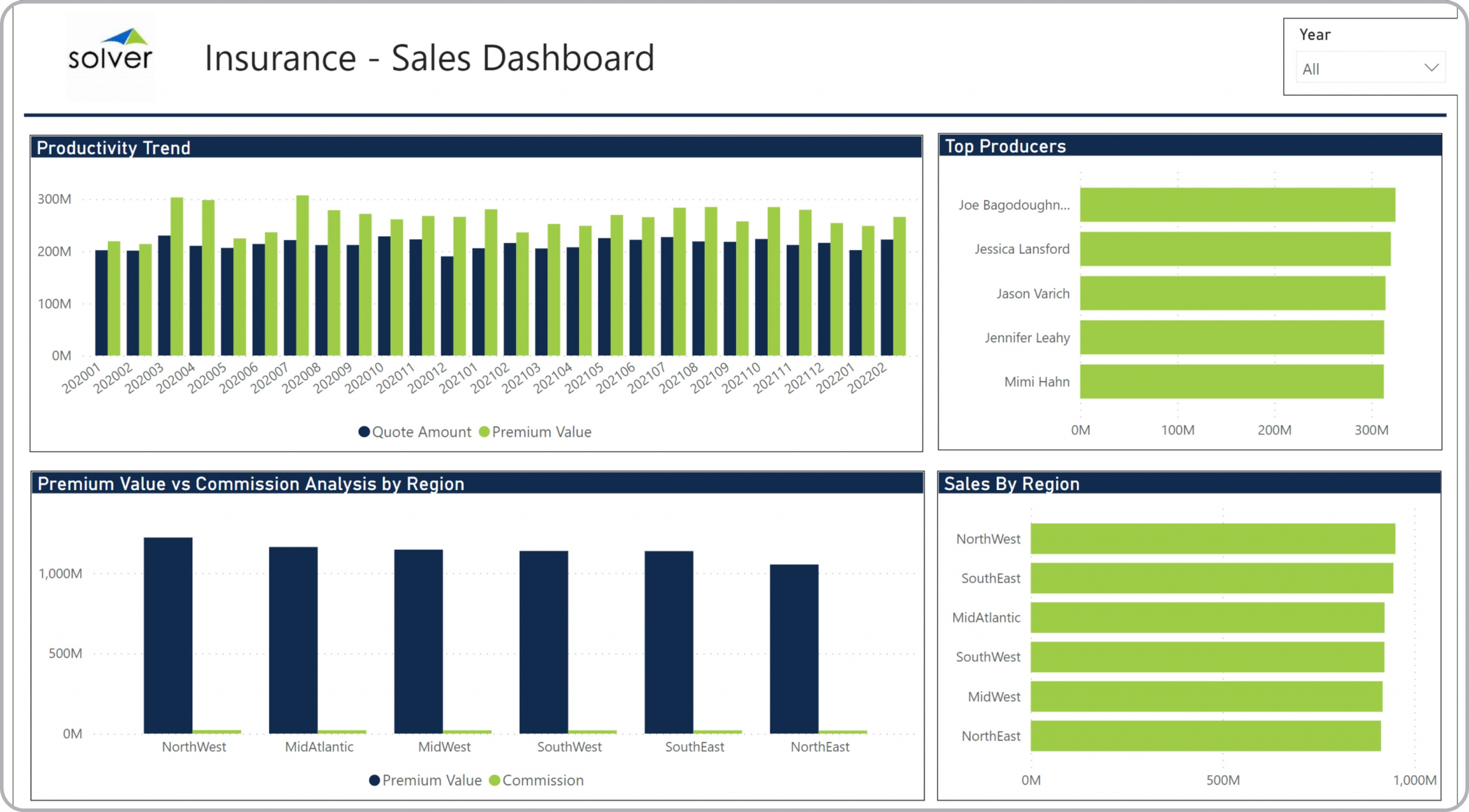Written by Nils R. | May 17, 2021 7:00:00 AM
What is a
Sales Dashboard for Insurance Companies
? Sales Dashboards are considered performance analysis tools and are used by Sales Executives and Product Managers to monitor trends and performance metrics. Some of the main functionality in this type of dashboard is that it enables analysis of sales activity from four different perspectives: 1) 24 month productivity trend with quote amount and premium value, 2) Premium value versus commissions by region, 3) Top producers ranked by sales amount, and 4) Regions ranked by sales amount. You find an example of this type of dashboard below.
Purpose of
Sales Dashboards Insurance companies use Sales Dashboards to enable their managers to easily monitor key sales performance indicators. When used as part of good business practices in insurance sales departments, an organization can improve its revenues and related strategies, and it can reduce the chances that managers end up with delayed or bad decisions due to lack of clear insight.
Example of a
Sales Dashboard Here is an example of a Sales Dashboard with productivity trend analysis and ranked sales performance. [caption id="" align="alignnone" width="2560"]


- Native ERP report writers and query tools
- Spreadsheets (for example Microsoft Excel)
- Corporate Performance Management (CPM) tools (for example Solver)
- Dashboards (for example Microsoft Power BI and Tableau)
- View 100’s of reporting, consolidations, planning, budgeting, forecasting and dashboard examples here
- View an Insurance industry white paper and other industry-specific information here
- See how reports are designed in a modern report writer using a cloud-connected Excel add-in writer
- Discover how the Solver CPM solution delivers financial and operational reporting
- Discover how the Solver CPM solution delivers planning, budgeting and forecasting
- Watch demo videos of reporting, planning and dashboards
